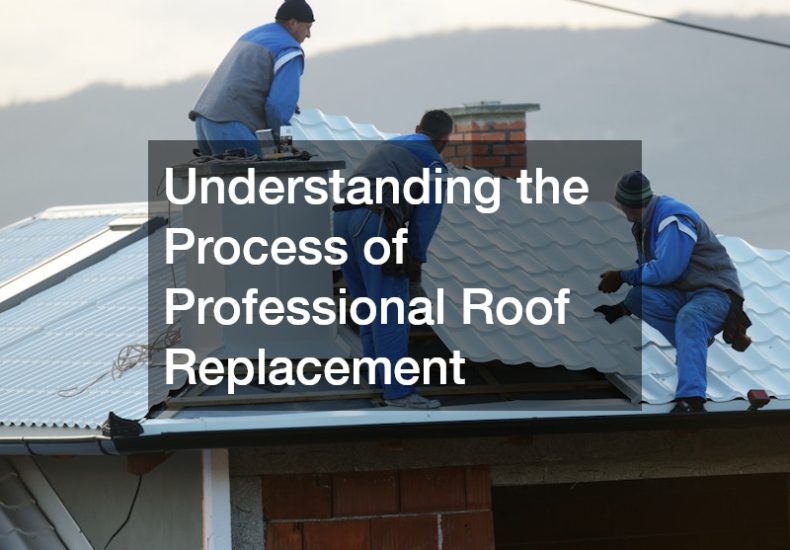
Understanding the Process of Professional Roof Replacement
There are multiple essential aspects of professional roof replacement, including preparation, materials, labor, and final touches. Understanding this process can help homeowners make informed decisions and ensure they choose the right contractors for the job.
What Are the Signs That a Roof Needs Replacement?
Many homeowners are unaware of the indicators that suggest a roof replacement is necessary. Common signs include leaks, damaged shingles, and significant wear and tear.
Leaking roofs can result from various problems, such as worn-out shingles or flashing issues, which often signal that it’s time for a replacement. Regular inspections are crucial to identify these issues early on. Homeowners should pay attention to water stains on ceilings and walls as they can be indicative of a failing roof.
Another critical sign to watch for is the condition of the shingles. Curling, buckling, or missing shingles can expose the underlying material to the elements, leading to further damage. It is essential to assess the overall condition of the roof, especially after severe weather events that could exacerbate existing problems.
A roof’s age also plays a significant role in determining whether it needs a replacement. Most roofing materials have a lifespan that can be increased with proper maintenance. Homeowners should consult with roofing experts to evaluate the longevity of their specific roofing system and decide whether repair or replacement is the best course of action.
How Do You Choose the Right Roofing Material?
Choosing the right roofing material is crucial for durability and aesthetics. Asphalt shingles are one of the most commonly used materials due to their affordability and ease of installation. They come in various colors and styles, making them a versatile option for many home designs. However, their longevity is often less than that of some other materials, which homeowners should consider in their decision-making process.
Metal roofs are gaining popularity for their durability and energy efficiency. They can last significantly longer than traditional materials and are available in styles that mimic shingles, tiles, or even wood. Homeowners should weigh the upfront costs against the long-term benefits when considering metal as an option.
Tile roofs offer a distinctive look and excellent durability. They can withstand harsh weather conditions and provide superior insulation. However, their weight can be a factor, and homeowners may need to ensure their existing structure can support this type of roofing material.
What Can You Expect During the Roof Replacement Process?
The roof replacement process can be intricate. The process usually begins with a comprehensive inspection by a roofing professional who will assess the current roof’s condition and provide an estimate. This initial step is crucial as it helps identify any underlying issues that may complicate the replacement process. Homeowners should be prepared for discussions about their roofing options based on the inspection findings.
Once the materials and timeline are confirmed, the preparation phase begins. This can involve securing necessary permits and notifying neighbors about the impending work. Homeowners should also prepare their yard, ensuring that pets and vehicles are moved away from the workspace to facilitate a safe and efficient operation.
The actual replacement begins with the removal of the old roofing material, which can be labor-intensive and requires careful handling to prevent damage to the underlying structure. After that, the new material will be installed according to the manufacturer’s specifications and local building codes, further ensuring durability and performance.
What Are Common Mistakes to Avoid When Replacing a Roof?
To ensure a successful roof replacement, it’s important to be aware of common pitfalls. One of the most significant mistakes homeowners can make is hiring unlicensed or uninsured contractors. This can lead to subpar work and could leave homeowners liable for accidents that occur on their property. It’s essential to ensure that the contractor has the necessary licenses and insurance coverage before hiring them.
Another common mistake is neglecting to obtain the required permits before starting the project. Many localities have specific regulations regarding roof replacement that must be followed. Failing to adhere to these guidelines can result in fines and complications when selling the home in the future.
Ventilation is also a frequently overlooked aspect of roof replacement. Proper ventilation helps maintain a stable indoor temperature and can extend the life of your roofing materials. Homeowners should discuss ventilation options with their contractors to ensure that their new roof will perform effectively and efficiently over time.
Professional roof replacement is a significant investment that requires careful consideration and preparation. By understanding the essential components of the process, homeowners can confidently make choices that protect their homes for years to come. Understanding the process of professional roof replacement is essential for any homeowner looking to make informed decisions about one of their property’s most important investments. From the initial inspection and material selection to installation and cleanup, each phase plays a vital role in ensuring a durable, long-lasting result. Knowing what to expect helps you prepare financially, anticipate the project timeline, and minimize disruptions to your daily routine.

You may also like
Calendar
| M | T | W | T | F | S | S |
|---|---|---|---|---|---|---|
| 1 | 2 | |||||
| 3 | 4 | 5 | 6 | 7 | 8 | 9 |
| 10 | 11 | 12 | 13 | 14 | 15 | 16 |
| 17 | 18 | 19 | 20 | 21 | 22 | 23 |
| 24 | 25 | 26 | 27 | 28 | 29 | 30 |
Leave a Reply